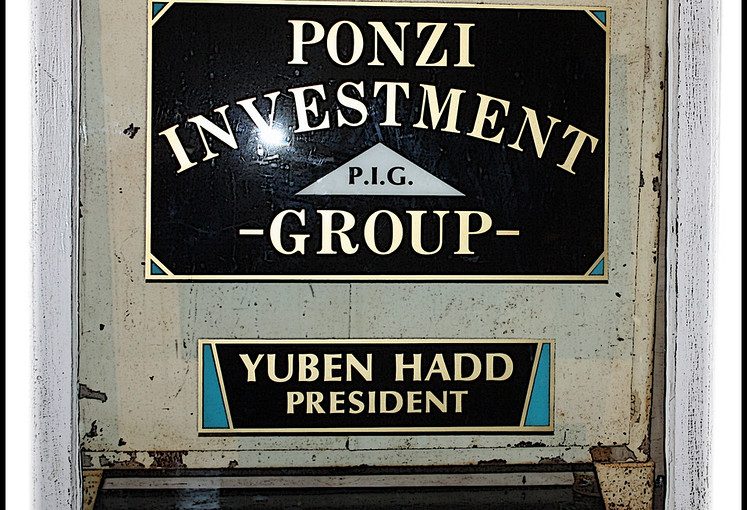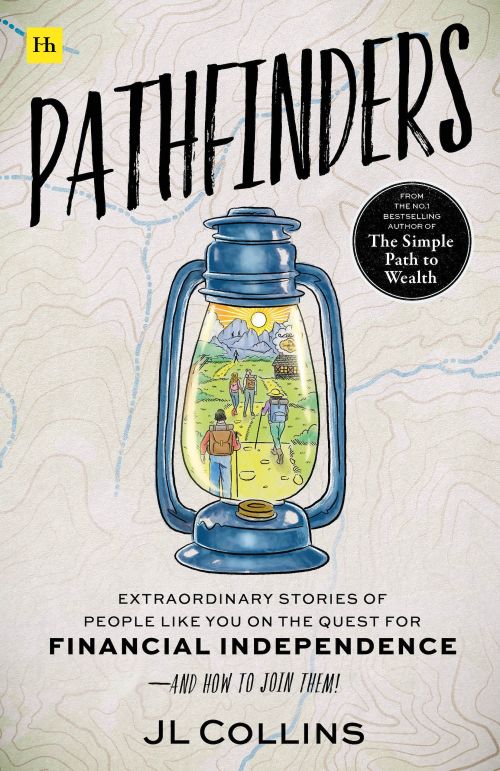What? $2,800 per hour? This must be a crazy MLM scheme or some sort of bait and switch scam, right?
Not at all. On average I work one hour a month managing my two real estate properties. Each month I clear an average of $2,816 (including my principal and net of expenses and taxes). So my hourly rate is $2800!
But “passive”? That is impossible, you might say. Yes, really. As I show below, the average percentage of my time (.006%) that I spend each year managing my two rental properties rounds to zero! It essentially takes me the same amount of time as investing in stocks.
For 19 years I have owned one or two rental houses at a time (I have two right now). I like to say I am a lazy landlord, but actually I’m an efficient landlord.
I bought and lived in all of my rental houses before I rented them out. I have calculated that buying is often a better investment than renting (comparable houses), but ONLY if you are willing to keep the house for 7-10+ years, much like long-term stock investing. Since keeping these houses instead of selling was the better long-term investment, I now rent them to other people instead of renting them to myself.
So How Much Time Does It Take To Manage a Rental Property?
Let’s put this in perspective: In the 13 years (156 months) of self-managing my current property in Ohio, I had 87 maintenance and repair expenses. In other words, on average I had a 20-minute issue to resolve every 1.8 months.
Of course, I can’t ignore the upfront and more time-consuming effort to get a lease, advertise, screen tenants, and then handover the property (~10 hours) and the infrequent work of replacing my tenants (6 hours) or renewing the lease (2 hours)–a great house rents quickly. There is also the rental-property related work on my taxes that takes about an hour each year, and maintenance inspections of the properties that take about two hours per property each year. (My trusted handyman actually inspects for me in OH, so now I only visit that property once every 2-3 years).
On average over the last 13 years, I have spent about 35 minutes a month managing my OH property (not even a full hour!) and I clear over $1000 per month. That’s $12,000 a year for 7 hours of work – a pretty good wage. I make even more on my VA property ($1800 per month) and I average even less time per month managing it (25 minutes). I think you get the point–it doesn’t take that much time to manage a property if you have good systems in place.
Most months, nothing happens except the rent arrives by direct deposit.
Setting Up Good Systems Saves Me A Lot of Time
- Number one is finding good renters. I don’t skimp on tenant screening. I always call work and housing references, and I complete credit checks unless they are active duty military, and even then I still collect all the info needed for a credit check.
Great renters are looking for a quality home for their family. They tend to care about their belongings, their credit score, the appearance of the yard, and they will care more about my house. Many of my renters do simple maintenance and repairs themselves, or they are willing to pay for improvements they want. One renter (with the help of her handy dad) offered to install new composite decking if I paid for the materials. The house now has a huge, great-looking deck for 10% of the cost I would have had to pay a company to install it.
- Getting great renters requires a great house. I buy houses in desirable school districts and neighborhoods, which I know first hand because I first lived in them myself (my system works for a small number of rentals). I have bought in military communities, and I usually rent to senior-grade military families.
- I make sure my lease agreement is comprehensive. Setting standards and expectations up front is key to avoiding problems later. My first lease was OK, but every renewal since I have strengthened it with lessons I have learned myself or learned from smart friends with more experience.
- Set expectations with renters up front on maintenance and communication. I walk through with my new tenants how maintenance and repairs will work. For true emergencies (e.g., no heat in the winter or a water break), I empower them to call for repairs directly with the appropriate company if they can’t reach me quickly and it can’t wait. When they do reach me with a problem, I either have my handyman look at it (with a quick email or text), or I have the renter call a company of my choice (or theirs if I don’t have one lined up already). I have the bill come directly to me. This saves everyone time as the repairman has to schedule with the renters anyway, and the renters are very happy to be in charge of scheduling.
- A reliable handyman is recommended but not required. I have a great handyman for my OH property but I have yet to find one for my VA property. While addressing maintenance issues takes the same amount of my time, having a reliable handyman saved me money and improved my confidence in getting quality work.
- Take advantage of the quality and often free resources online to make renting a property easier. Online sites like Zillow (no endorsement intended) work great for advertising, tenant applications, and background checks. I invested about 3 hours, one time, to modify a premade lease for each state I rent in to make sure I comply with state landlord-tenant laws. I set up my property management tracking spreadsheet, where I keep a simple on-going record of income and expenses, in about 30 minutes.
If I only focused on the initial one-time effort needed in the first few weeks of renting out my house, then it may feel like a lot. But over a 19-year time frame, each month it is hardly any time at all.
Skip The Property Manager – It Doesn’t Take That Much Time
Since I have two properties and live far from either of them, I must have a property manager, right? Nope! I learned the hard way that a property manager doesn’t really save you any time.
If the water heater broke, the tenants contacted my property manager who would then call me about it. Then the manager called a repair person and scheduled the repair with the tenants. Then I was sent the paperwork each month that I needed to file away for taxes with the amount subtracted from my rent (or I was billed if the repair was major).
Now that I’m my own property manager, the renters text me if the water heater breaks. I ask them to call a repair company and schedule the repair at their convenience and have the company bill me. It’s the same amount of effort on my part and more convenient for the renter to schedule their own repair, but without having a middleman or becoming the middleman between the renter and the repair company.
With a 5-minute call from the tenant (or usually a text with a picture), and a 5-minute call to the company to pay (usually an online payment), the work is done and the problem is solved. I then open up my property management spreadsheet and record the expense (another 5 minutes). So after 15 minutes of work, the problem is solved.
On more complex issues like working with a neighbor to take down a shared tree, I had to write a good 10 texts back and forth to coordinate the work. It took me a whole hour total to get that job done – whew!
As my good friend and real estate expert Keith Nugent shared with me at a CampFI, you need to be your own property manager until you understand every aspect of it and then only consider hiring one once you own five or more doors. My experience confirms this. Since I’m not planning to expand my properties past two, I’m never planning to hire a property manager.
Don’t Confuse Stress With Work
It can be a stressfulI conversation to demand overdue rent or pursue eviction action, but these actions do not take up much actual time. The one time in 19 years I needed to pursue eviction it was definitely stressful, but it did not take much time to resolve. I called a lawyer (it took maybe an hour) who sent the eviction proceedings letter to the tenant. The tenant then left.
The reason I hear that people feel renting properties is too much work often goes something like this: “I don’t want to deal with calls at 3:00 am for an overflowing toilet.” I feel that is a worn out trope. For one, an overflowing toilet is almost always the renters’ fault for clogging it, so they would pay the bill for any repair or damage and clean up. My excellent renters have never called me for such things.
My tenants did call once at 11:00 pm about the heat not working in the winter, and I empowered them to call a repairman directly and that I would cover any extra fee for an emergency response (I don’t skimp on safety). Then I went to bed and slept well. Being called after 10:00 pm has happened maybe 4 times in 19 years and it took me 5 minutes to resolve each one.
I try not to confuse stress with time. Over the years, tenant issues are infrequent and rarely take much time. Even getting quotes for a new roof or windows only took a couple hours. I am responsive and get the problem fixed.
Is Stock Investing Truly Passive, but Real Estate is Not?
I often hear in FIRE podcasts and read in blogs that stock investing is truly passive – the old “set it and forget it.” While I am a “passive” index fund investor, I have found I actually need to spend some time managing my investments.
I rebalance every quarter so my funds stay within the percentages of my investment strategy. I spent time calculating my traditional IRA to Roth IRA conversions (I have some after-tax basis). It takes many hours to rollover my wife’s and my 403b, 457b, 401k, 401a accounts to our IRAs. I keep an eye on the stock market and buy when it drops 10% or more (push more bonds into stocks) and then I rebalance when the market recovers. I spend about an hour each year on my taxes related to my stock investments.
I spend nearly as much time on my stock investments as I do my real estate management and both pay me a handsome wage per hour! So technically neither is 100% passive, and neither has to be a lot of effort.
Basic real estate investing in a few houses can be fundamentally as passive as stock investing. If I ever did get too many rentals where I noticed and cared about the higher workload, then I’d switch to a good property manager and drop my level of effort back down.
Real estate investing, as with stock investing, benefits from up-front research. Setting up a good system will minimize your long-term efforts, diversify your portfolio, and save you money over renting if you decide that the renter of your house is you.
So is Real Estate Passive Income? In My Book – YES!
So, with all of this talk about how much time it takes to manage rental properties, it can’t be considered passive, right? Let’s run some numbers…
There are 2080 hours in a work year (40 hours per week x 52). I work an average of 12 hours per year on my rental properties, which is .006% of traditional work time. Even if I doubled it with 2 additional properties or quadrupled the time spent, it would still round to zero!
So, either real estate is passive income or I earn over $2800 an hour! Either way, it is worth the effort.
P.S. For further information on how being a landlord does not have to consume a lot of time, and how to set up good systems to become a “Lazy Landlord,” check out James Lowery’s presentation at the 2023 ECONOME conference.



